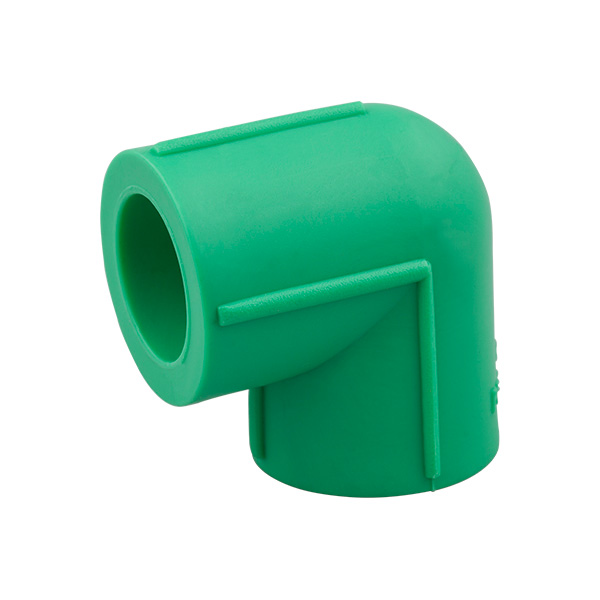Abst:There are three main factors to consider when evaluating a PPR Pipes. These are thermal conductivity, cost-effectiveness and durability. Let's review these aspects and explain why they are important. A proper understanding of these factors will help you make an informed decision. The final choice will depend on your specific requirements and budget.
Thermal Conductivity
PPR tubes are known for their low thermal conductivity, which helps reduce heat gain and loss. This results in a more efficien...
There are three main factors to consider when evaluating a
PPR Pipes. These are thermal conductivity, cost-effectiveness and durability. Let's review these aspects and explain why they are important. A proper understanding of these factors will help you make an informed decision. The final choice will depend on your specific requirements and budget.
Thermal Conductivity
PPR tubes are known for their low thermal conductivity, which helps reduce heat gain and loss. This results in a more efficient system and reduced insulation costs. Additionally, PPR pipes are very durable and can last over 50 years. They are suitable for hot and cold water systems and can withstand the high temperatures in these systems.
There are two main methods for evaluating the thermal conductivity of PPR tubes. These methods are known as the ASTM C177 method and the Modified Transient Planar Source (MTPS) method. Both methods can measure the thermal conductivity of materials at different temperatures.
Cost-effectiveness
PPR pipes are thermoplastic pipes made of polypropylene random copolymers used in drainage, water supply, sanitation and ventilation systems. These pipes are corrosion resistant and offer high mechanical strength. They are also lightweight and easy to use. Also, they are eco-friendly.
Compared to metal pipes, PP-R pipes are 75% to 80% lighter. They are easy to handle and move, and their lightweight materials prevent leaks. They also feature hot melt connections to minimize expansion and contraction. They are easy to install and the manufacturer provides training for installers. These connections, while potentially more expensive than other branch-type connections, do not compromise the structural integrity of the pipeline. Therefore, they can be placed closer together in the system than other types of pipes.
Using PPR pipes also saves energy and money. Their low thermal conductivity means that outside temperatures cannot easily transfer to the liquid inside the pipe. This makes them energy efficient and also reduces insulation costs.
Durability
The durable nature of PPR pipe makes it an excellent choice for plumbing systems. They are resistant to corrosion, abrasion and peeling. They are also inert to most chemicals and electrolytes. This is an important benefit for industrial and well water applications. Moreover, PPR tubes do not require high energy consumption and are easy to handle.
Another major advantage of PPR tubes is their low thermal conductivity. This means that the outside temperature will not affect the liquid inside the pipe. Therefore, there is less heat loss and heat gain. They are also extremely durable, lasting up to 50 years in a variety of environments. Additionally, PPR piping can withstand a wide range of fluids from cold to hot.
economy
PPR pipes are very economical and durable. They can withstand a wide range of temperatures in hot and cold water systems. They are also lightweight, require very little energy to install, and are easy to use. Compared with other plastic pipes, PPR pipes have the following advantages.
Economical: PPR pipes are inexpensive to install and can save a lot of money. However, PPR pipes must be installed by professionals. This is because they require special tools and installation. The following points can help you decide if a PPR pipeline is right for your project.
Environmentally friendly: PPR pipes are made of natural materials and have little impact on the environment. These pipes are commonly used for hot and cold water piping in industrial and residential facilities. They are also ideal for conveying aggressive chemicals and can be installed in circulating loop piping systems.
application
PPR pipes are widely used in water supply, sewage, irrigation and gas transmission systems. PPR pipes are lightweight and easy to work with, making them ideal for these applications. They are also safe to use because they do not require any chemicals or other materials. Also, they do not change the taste of the liquid they carry.
PPR pipes are also highly resistant to chemical corrosion. The smooth inner surface prevents the formation of deposits and limescale. They also have excellent thermal insulation and low thermal conductivity. This makes them ideal for delivering clean drinking water in distribution networks.
 GA-4803 90°Elbow
GA-4803 90°ElbowZHEJIANG QIAI TUBING INDUSTRY CO., LTD. was established in 1996, we are the China GA-4803 90°Elbow suppliers, our main products include: PP-R pipes and fittings, aluminum pipes and fittings, PE-RT pipes and fittings, brass fittings, water and gas valves, stainless steel corrugated flexible gas hose, stainless steel flexible water hose, and so on.


